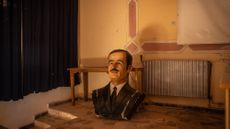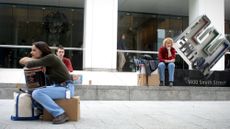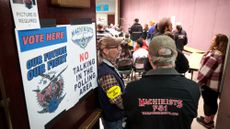Your Mac, PC, and smartphone are almost certainly compromised by two big security flaws


On Thursday, Apple said that Mac computers, iPhones, and iPads (but not Apple Watches) are vulnerable to two hard-to-fix security flaws that cybersecurity experts revealed Wednesday. Windows, Google, and other companies that make PCs, smartphones, servers, and tablets had already acknowledged that their own devices have the same issue. The flaws — given the villainous names Spectre and Meltdown — could be used by hackers to exploit the microprocessors, mostly made by Intel, in internet-connected devices to launch a "side-channel analysis attack" to steal files, passwords, photos, and other documents.
Intel, the dominant chipmaker, says the vulnerability has been in every microprocessor it has made since 1995, but apparently nobody realized the risk until a few months ago, when security researchers at Google, Cyberus Technology, Rambus, Data61, and universities in Austria, Australia, Pennsylvania, and Maryland independently hit upon the flaws. No hackers are known to have exploited the vulnerabilities. Both of them, but especially Spectre, are difficult to fix entirely because they're baked into the hardware, but all major tech companies have been rolling out software patches to mitigate the risk.
Shared servers that host cloud services are deemed the most at risk of infection, but security experts say consumers should update their Windows, Google, Apple, and other internet-connected devices to take advantage of the software patches and firmware updates being rushed out. "These will likely be modified as companies craft the best work-arounds, so it's not likely to be a one-time deal — update early and often!" USA Today advises. You can learn more about Spectre and Meltdown and read more about how to update specific devices at USA Today and The New York Times.
Subscribe to The Week
Escape your echo chamber. Get the facts behind the news, plus analysis from multiple perspectives.

Sign up for The Week's Free Newsletters
From our morning news briefing to a weekly Good News Newsletter, get the best of The Week delivered directly to your inbox.
From our morning news briefing to a weekly Good News Newsletter, get the best of The Week delivered directly to your inbox.
Sign up for Today's Best Articles in your inbox
A free daily email with the biggest news stories of the day – and the best features from TheWeek.com
Peter has worked as a news and culture writer and editor at The Week since the site's launch in 2008. He covers politics, world affairs, religion and cultural currents. His journalism career began as a copy editor at a financial newswire and has included editorial positions at The New York Times Magazine, Facts on File, and Oregon State University.
-
 5 hilariously spirited cartoons about the spirit of Christmas
5 hilariously spirited cartoons about the spirit of ChristmasCartoons Artists take on excuses, pardons, and more
By The Week US Published
-
 Inside the house of Assad
Inside the house of AssadThe Explainer Bashar al-Assad and his father, Hafez, ruled Syria for more than half a century but how did one family achieve and maintain power?
By The Week UK Published
-
 Sudoku medium: December 22, 2024
Sudoku medium: December 22, 2024The Week's daily medium sudoku puzzle
By The Week Staff Published
-
 Judges block $25B Kroger-Albertsons merger
Judges block $25B Kroger-Albertsons mergerSpeed Read The proposed merger between the supermarket giants was stalled when judges overseeing two separate cases blocked the deal
By Peter Weber, The Week US Published
-
 Rupert Murdoch loses 'Succession' court battle
Rupert Murdoch loses 'Succession' court battleSpeed Read Murdoch wanted to give full control of his empire to son Lachlan, ensuring Fox News' right-wing editorial slant
By Peter Weber, The Week US Published
-
 Bitcoin surges above $100k in post-election rally
Bitcoin surges above $100k in post-election rallySpeed Read Investors are betting that the incoming Trump administration will embrace crypto
By Peter Weber, The Week US Published
-
 Enron mystery: 'sick joke' or serious revival?
Enron mystery: 'sick joke' or serious revival?Speed Read 23 years after its bankruptcy filing, the Texas energy firm has announced its resurrection
By Peter Weber, The Week US Published
-
 US charges Indian tycoon with bribery, fraud
US charges Indian tycoon with bribery, fraudSpeed Read Indian billionaire Gautam Adani has been indicted by US prosecutors for his role in a $265 million scheme to secure solar energy deals
By Peter Weber, The Week US Published
-
 Boeing machinists approve contract, end strike
Boeing machinists approve contract, end strikeSpeed Read The company's largest union approved the new contract offer, ending a seven-week strike
By Peter Weber, The Week US Published
-
 US economy still strong in final preelection report
US economy still strong in final preelection reportSpeed Read It grew at a solid 2.8% annual rate from July through September
By Peter Weber, The Week US Published
-
 Boeing machinists reject deal, continue strike
Boeing machinists reject deal, continue strikeSpeed Read The rejection came the same day Boeing reported a $6.2 billion quarterly loss
By Peter Weber, The Week US Published